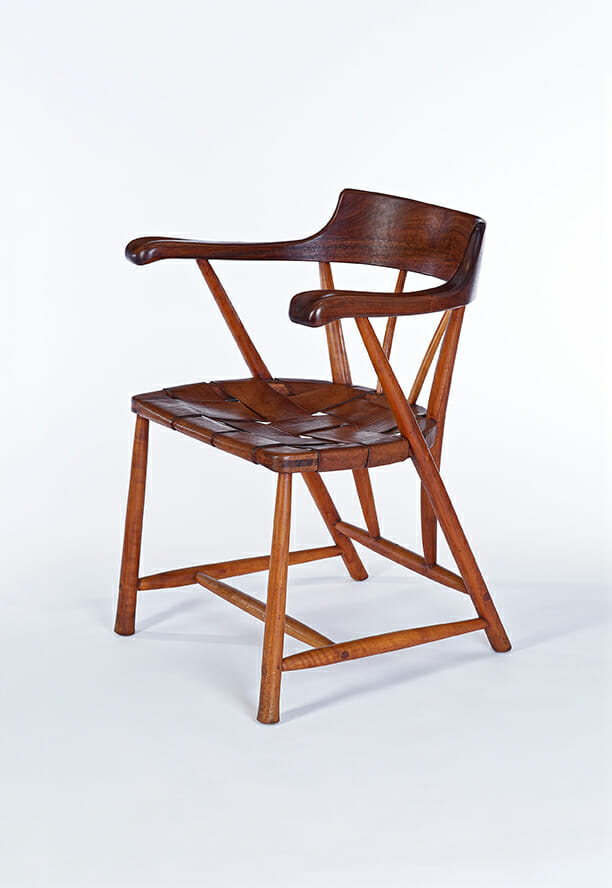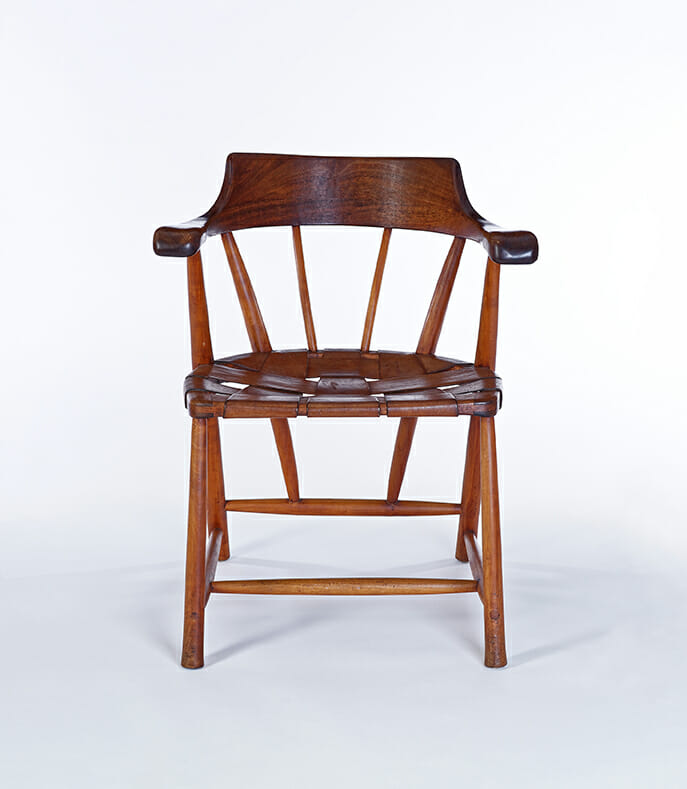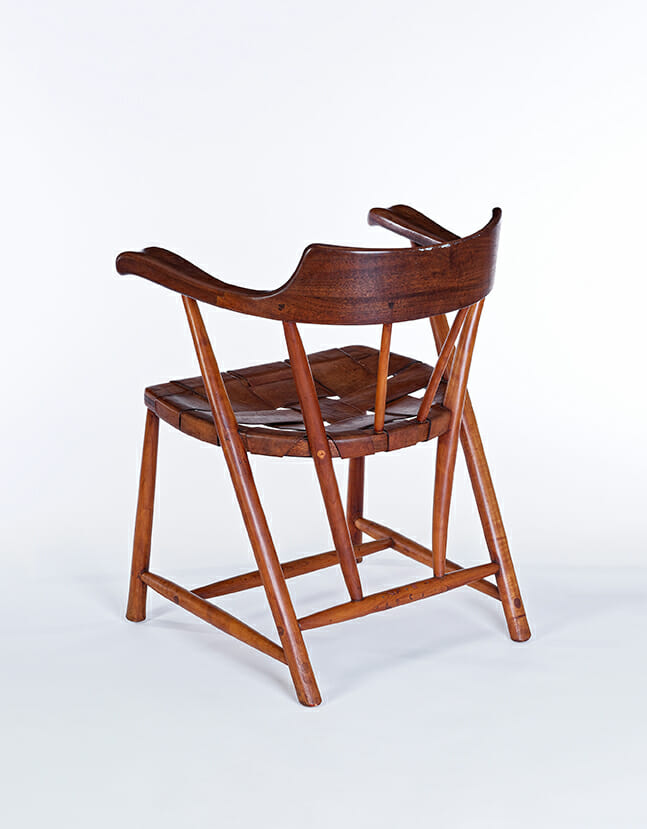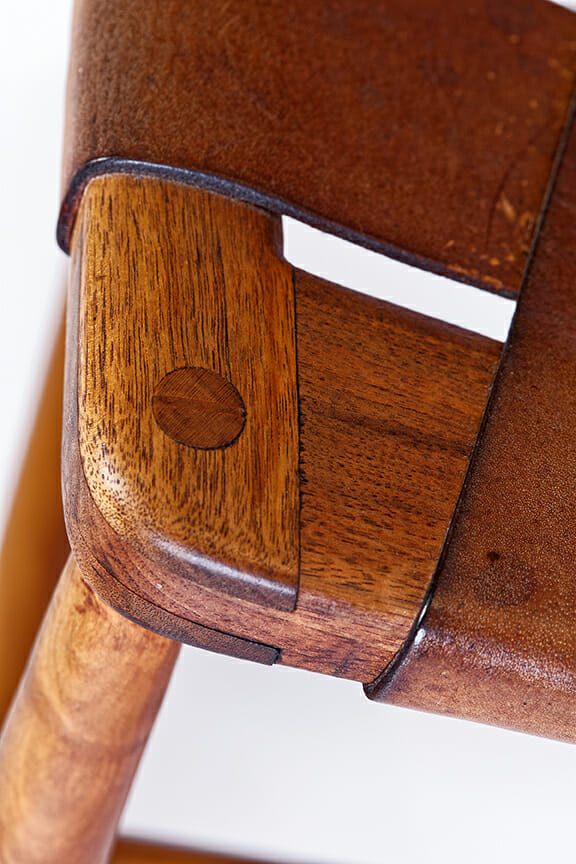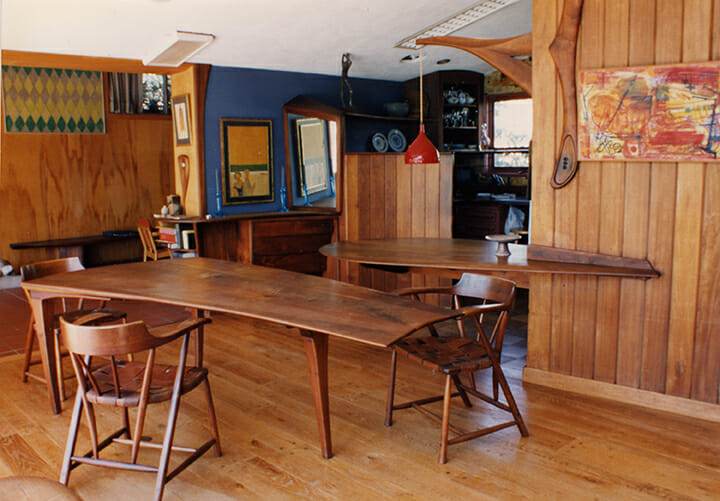Captain’s Chair
Wharton Esherick
1951
Walnut, cherry, laced leather seat
29.5 x 20.9 x 20.9 inches
Collection of the Wharton Esherick Museum
Images courtesy of Eoin O’Neill and Wharton Esherick Museum Collection, ca. 1960
By the 1950s, an increasing population — and not just the wealthy looking to commission one-off works — was interested in furnishing their homes with contemporary, artist-made objects. Esherick’s Captain’s Chair became a favorite solution to this problem, and subsequently, one of his most marketable pieces. Working from Esherick’s prototype, his regular collaborator cabinetmaker John Schmidt could produce six chairs at a time, which kept down costs and made the Captain’s Chair accessible to a wider range of buyers. Often, this would be a first piece bought to furnish a home, leading to larger commissions for Esherick down the line. In the above image of the home of Alice and Lawrence Seiver, Captain’s Chairs flank a unique, three-legged table designed by Esherick in 1957; the image shows how Esherick’s limited production pieces and one-off works lived in easy harmony. By the time this image was taken in the 1950s, the Seiver’s home featured an extensive collection of Esherick’s work across all types.
This Captain’s Chair holds particular interest as it is a prototype for the limited production designs. While the arm ends of the chair are rounded, a look at subsequent versions shows that these weren’t utilized moving forward.
See another example of the Captain’s Chair in the collection of the Metropolitan Museum of Art.

